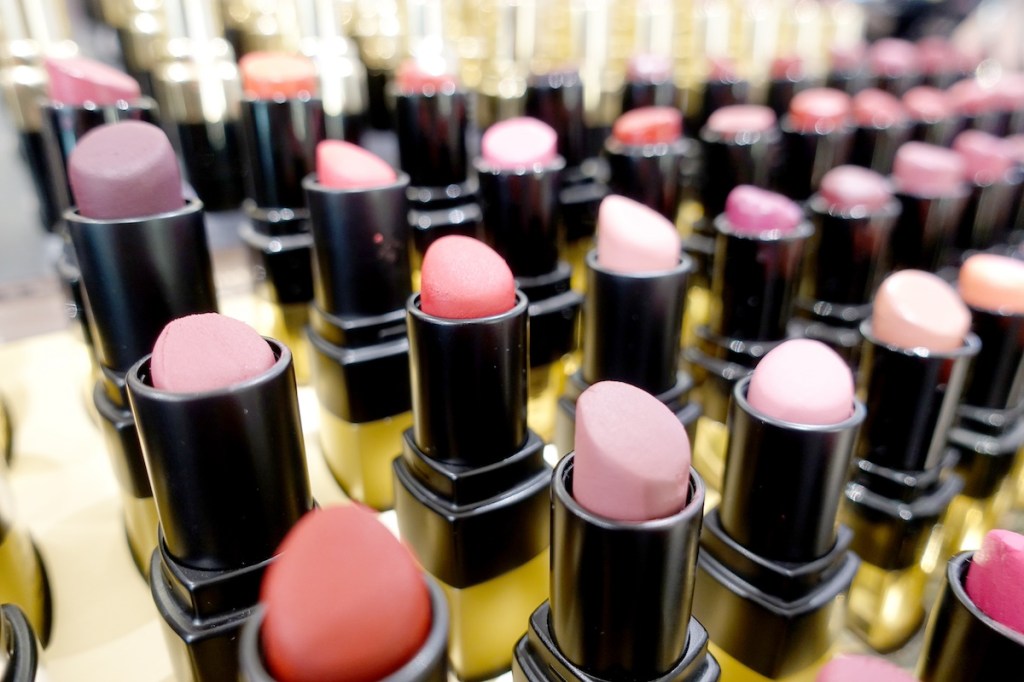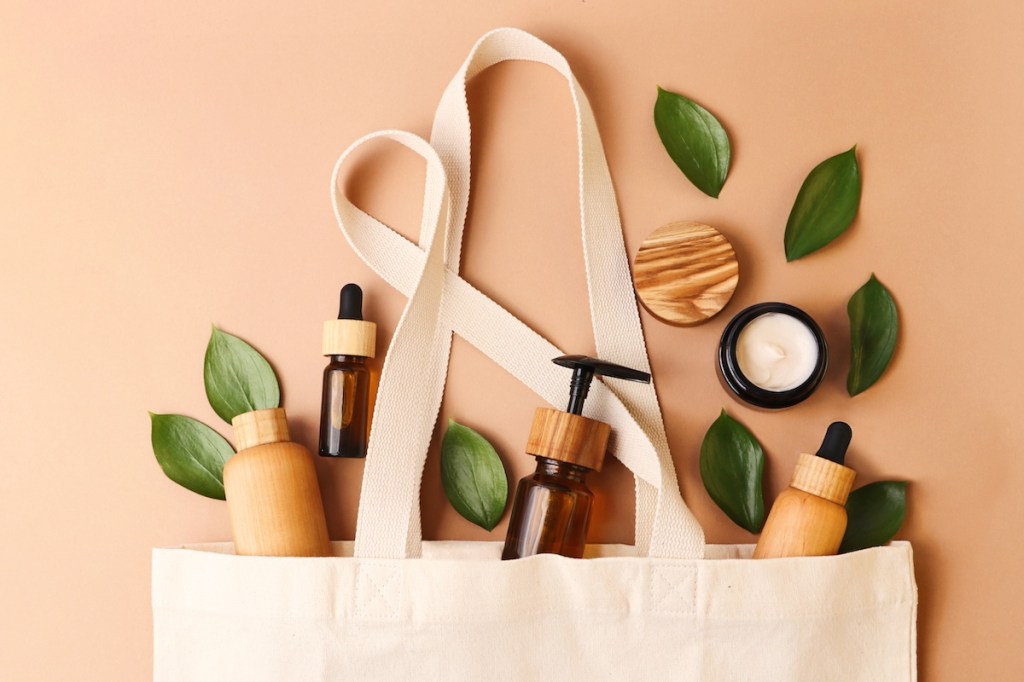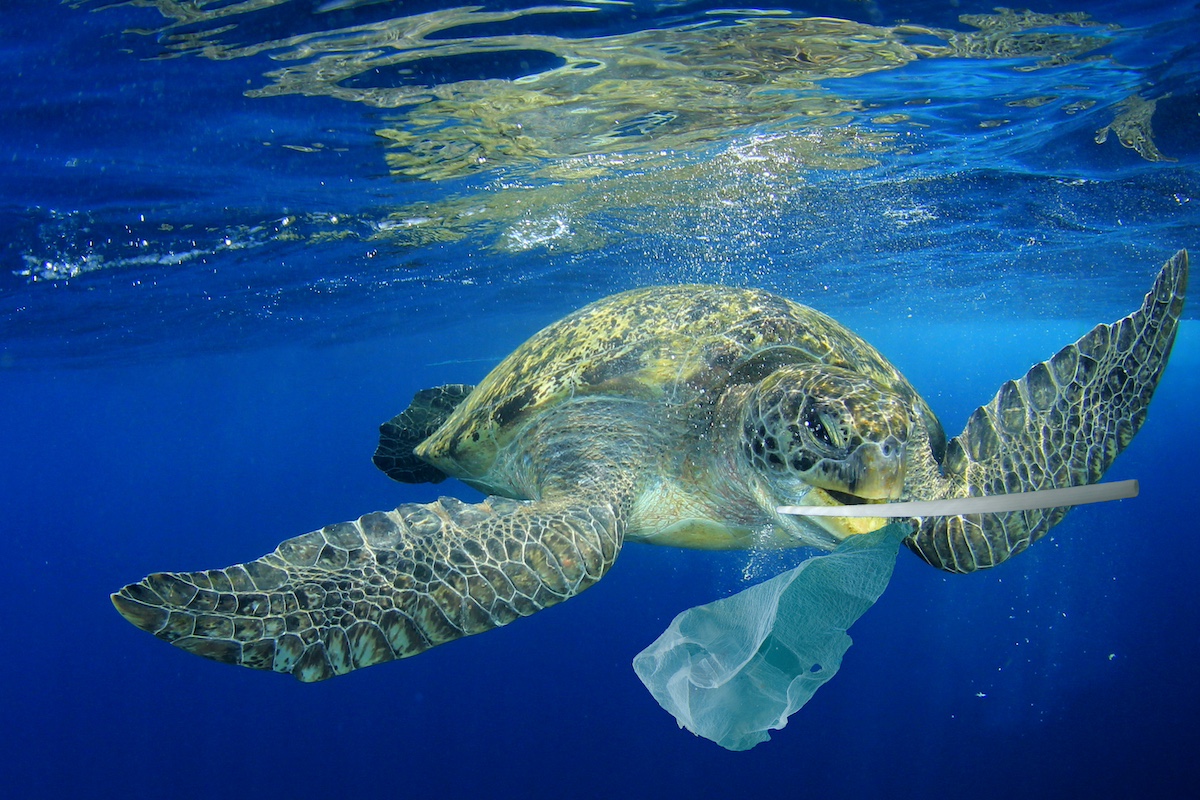By Tamara Davison
Over the last few decades, the beauty market has expanded — and to meet rising demand, many brands have inadvertently made their environmental footprint worse. The rate at which pollution created by the cosmetic industry enters our environment is escalating (Plastic Pollution Coalition, 2022).
The beauty industry clearly needs to reassess its ecological impact. Thankfully, some brands have cottoned onto this, and are moving more towards sustainable beauty — but how much does it actually affect the environment? Let’s dive in through this comprehensive guide.
The environmental impact of cosmetics – at a glance
The beauty industry impacts our environment in several ways. Current practices can deplete natural resources, damage oceans, hurt wildlife, and produce harmful microplastics.
But the biggest challenge the beauty world faces is packaging waste. The beauty industry produces at least 120 billion pieces of packaging each year. Given that 95% of cosmetic packaging is thrown away, you can see the scope of environmental challenges this presents. Luckily, it’s not all doom and gloom. A lot of cosmetic brands are starting to reconsider their environmental impact.
How does the cosmetics industry impact the environment?
A lot of factors contribute to the environmental impact of cosmetics — and each stage of a product lifecycle can potentially cause harm. To give you a better idea, we’ve discussed the top ways the beauty industry impacts the environment below.
- Generates a lot of plastic waste – Beauty brands commonly use plastic for packaging because it’s easily made and more affordable than other options. However, the environmental fallout of plastic packaging waste is huge. The British Beauty Council pointed out that just 14% of plastic waste is sent to recycling and only 9% gets recycled. On top of that, synthetic ingredients also contribute to the plastic dilemma. Last year, Plastic Soup researchers analyzed the ingredients of over 7,000 beauty products and found that only 13% were free from microplastics.
- Harms wildlife – Wildlife is impacted by both the production and disposal of cosmetic products. A lot of plastic packaging waste eventually ends up in our rivers and oceans, posing a serious threat to marine species. According to the Environmental Investigations Agency, at least 633 marine species are affected by microplastics in the water. Wildlife habitats are also threatened by plastic pollution. A UK study found that thousands of wet wipes had formed new islands in waterways, changing the shape of our rivers.
- Contributes to deforestation – Experts have found that around 70% of beauty products contain some element of palm oil. Seen as a skin-friendly emulsifier, this natural ingredient is often sourced from palm oil plantations around Southeast Asia. The farming of palm oil contributes to staggering deforestation around our planet. Some experts estimate that an area the size of 300 football fields is cleared each hour to make way for palm oil farms. This also jeopardizes the habitats of endangered wildlife, such as the Sumatran tiger.
- Wastes huge amounts of water – One of the biggest resources consumed by the beauty industry is water. In 2020, around 10.4 million tons of water was used in the beauty industry. The cosmetic market is also considered one of the largest market contributors to water use, ocean pollution, and wastewater. Water is used for making beauty products in factories and rinsing off products in our homes. A lot of water used in cosmetics goes to waste, often going on to contaminate water systems. Given that two-thirds of the world’s population is expected to face water shortages within this decade, it’s clear this unnecessary water consumption is not environmentally sustainable.
- Contributes to climate change – The production and transportation of cosmetic products weigh heavily on carbon dioxide (CO2) emissions. The CO2 produced by heavy machinery or truck engines contributes to emissions that warm our planet. The carbon emissions of the entire beauty supply chain are hard to monitor, as so many people are involved. For instance, brands will work with raw material producers, packaging manufacturers, distributors, and logistics companies that all have their own carbon footprint. This is known as Scope 3 emissions. According to the Carbon Trust, a large proportion of beauty industry emissions come from two areas: sourcing materials for products and packaging, as well as consumer use of products. The study found that 59% of emissions come from consumers washing products with hot water heated with fossil fuels. Whereas 30% of emissions came from sourcing raw materials.

Key ethical concerns within the cosmetics industry
To improve the beauty industry, we need to make sure that we’re doing good in every area. That includes being kind to people and wildlife, as well as the planet. Ethical concerns relate to moral issues that can arise in the industry, as a result of business operations. We’ve listed a few of the common issues that crop up in the beauty industry below.
- Animal testing – Many beauty brands still test their products on animals. One study found that a whopping 88% of major cosmetic brands are not cruelty-free, meaning they test cosmetic products on the skin of animals to check for irritation or harmful effects. According to the Humane Society, around 500,000 animals suffer and die as a result of the cosmetic industry. Thankfully, many brands have vowed to stop testing on animals — but regulation has been slow to catch up. This summer, the UK government quietly reversed a ban on animal testing for beauty ingredients, paving the way for harmful practices to continue.
- Working conditions – Cosmetics are made in factories around the world, and many people are employed to create products. A lot has been reported about garment workers in developing countries suffering from poor working conditions. Some beauty brands have also been accused of failing their workers. More also needs to be done to support farmers who grow ingredients that are used in the cosmetic industry. For example, mica is a mineral that’s often used to add a shimmer to products. However, its extraction has been linked to forced child labor in countries like India.
How is the cosmetic industry becoming more sustainable?
While there’s certainly room for improvement, change is on the horizon. Over the last few years, the consumer appetite has shifted toward supporting a healthier, happier planet.
Sustainability has become a big priority for a lot of beauty lovers, meaning they
look for products that have reduced packaging, are free of toxic ingredients, and are kind to their skin. Almost half of consumers surveyed by CleanHub said they would also pay more for brands that came in sustainable packaging.
This shifting shopper demographic is spurring action in the beauty industry. And, good news for brands — there are plenty of ways to reduce plastic packaging in the beauty industry. A lot of brands have started to offer recycling or refill schemes to reduce waste. Others are improving ingredients to ensure they’re sourced ethically. Some cosmetic producers are even exploring how they can do their bit as part of a closed-loop circular economy.

What can consumers do to drive change in the cosmetics industry?
You have a lot of power when it comes to shaping change in the beauty market: Change starts with education: like reading up on potentially harmful practices happening in the industry. Knowing about sustainability in beauty can help shape your purchases, ultimately impacting business decisions.
Vote with your purse and support brands that are leading the way. Your purchases will send a clear message to support and buy from cosmetic brands that are committed to sustainability. Take part in sustainable initiatives. If a brand offers a recycling scheme, make sure you actually commit to it. This shows brands that their initiatives are working. Don’t be afraid to challenge sustainability claims and hold brands accountable. Think critically as a consumer and ask questions that ensure transparency in the industry.
Top tips on how cosmetics brands can be more sustainable
Many things need to change in the beauty industry if we’re going to protect our environment. We also know the journey to achieving sustainability can take a while. That’s why we encourage brands to embrace simple changes and build on their environmental commitment going forward.
- Analyse existing practices to understand where your cosmetic business can make improvements
- Take a look at manufacturing processes and explore ways that you can drive down water wastage and transport carbon emissions
- Explore sustainable or organic ingredients that can replace existing substances and make your products better for the planet
- Ditch plastic once and for all. There are many alternatives to single-use
plastic, such as organic materials or refillable glass bottles, that your consumers will much rather support - Commit to transparency and share your progress with your consumers and shareholders
Summary
The beauty industry is at an interesting turning point. While there are a lot of sustainable improvements happening,overcoming this challenge will take
some time.
Even if all brands stopped using plastic packaging today, our planet would still need to deal with millions of pieces of plastic that will be disposed of by cosmetic users over the next few years. This suggests that everyone has a role to play in achieving a sustainable beauty future. Brands and consumers will need to work together to make sure that real change is achieved.
CleanHub works with brands to stop plastic from heading to the ocean. Among our clients are several leading beauty brands, such as Sunday Riley and Noughty. By partnering with us, you can fund the collection and disposal of plastic while ensuring coastal communities are supported for their work.
Want to find out how your beauty brand can reduce plastic waste? Check out the CleanHub guide on Sustainable Strategy for Beauty Brands, where you can find advice on how to reduce your plastic packaging, the benefits of introducing a greener strategy, and guidance on the first steps on May 14, 2024.
This article originally appeared on the CleanHub blog, and has been used with their permission.
This article was first published in the Spring issue of Retail Beauty:
- For more news and updates, subscribe to our weekly newsletter
- Follow us on Instagram
- Like us on Facebook
- Connect with us on LinkedIn

